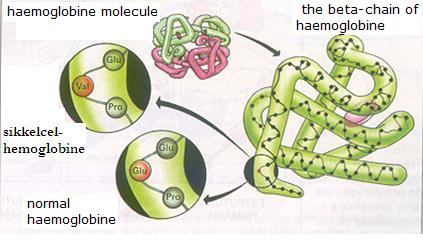The primary structure of proteins
The sequence of amino acids in polypeptides, in the proteins, we call the primary structure.
This is the linear sequence of the amino acids in the chain.
This sequence is extremely important for the functioning of that protein.
Mostly, substituting one amino acid in the chain is enough to change the activity of that protein, probably with negative consequences for the organism.

figure: albumine. The sequence of the amino acids and the positions of the sulphur bridges.
A protein molecule can be composed of one or more polypeptides.
Example:
The albumine (main component of the white part of an egg) has one single folded polypeptide structure.
Insuline however, the hormone that is made in the pancreas and controlls the amount of glucose in the blood, is composed of two polypeptide structures (see figure):
The amino acid Proline, if that appears in some polypeptide chain, prohibits or disturbs the production of the α-helices.
The consequence: no Hydrogen bridges can be mad (because of lack of the needed polarity).
Example:

Sickle cell anemia is inherited; something is missing. Reason is the one certain amino acid, somewhere in the plypeptide chain of Hemoglobine is substituted by something else. The right amino acid lacks.
The primary structure of the protein is wrong in the case of cickle cell anemia.

